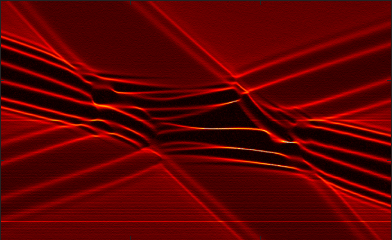AC measurements and noise
There has been growing interest in probing novel materials and devices via high frequency AC techniques. We have been studying a wide range of physical effects that are inaccessible via DC measurements, such as Shapiro steps in Josephson junctions, as well as shot noise and heat transport.
Josephson junctions under RF irradiation
The AC Josephson effect manifests itself in the form of “Shapiro steps” of quantized voltage in Josephson junctions subject to radiofrequency (RF) radiation. This effect presents an early example of a driven−dissipative quantum phenomenon and is presently utilized in primary voltage standards. Shapiro steps have also become one of the standard tools to probe junctions made in a variety of novel materials. We have recently studied Shapiro steps in a widely tunable graphene-based Josephson junction and investigated the variety of patterns that can be obtained in this well-understood system depending on the carrier density, temperature, RF frequency, and magnetic field. Although the patterns of Shapiro steps can change drastically when just one parameter is varied, the overall trends can be understood and the behaviors straightforwardly simulated. The resulting understanding may help interpret similar measurements in more complex materials.
Current fluctuations at mK temperatures
We have recently set up a measurement system for probing current-current correlations at mK temperatures. The setup could be used to measure two fundamentally different signals: 1) Johnson-Nyquist noise, which arises from the thermal fluctuations and can be used to directly probe the heat flow; and 2) Shot noise, which arises from the granularity of charge carriers and provides insight into the nature of the quasiparticles. The setup consists of high quality resonators and cryogenic amplifiers (Figure). As one might guess, the expected current fluctuations are very small. However, with a carefully designed system, it is possible to observe e.g. mK scale changes in temperature of a quantum Hall edge via the associated Johnson-Nyquist noise.
Corresponding Grad Students: Johnny Chiles (john.chiles@duke.edu)
Chun-Chia Chen (chunchia.chen@duke.edu)



 Supercurrent in
Supercurrent in  Multi-terminal
Multi-terminal  High frequency measurements
High frequency measurements Dissipative quantum dots
Dissipative quantum dots